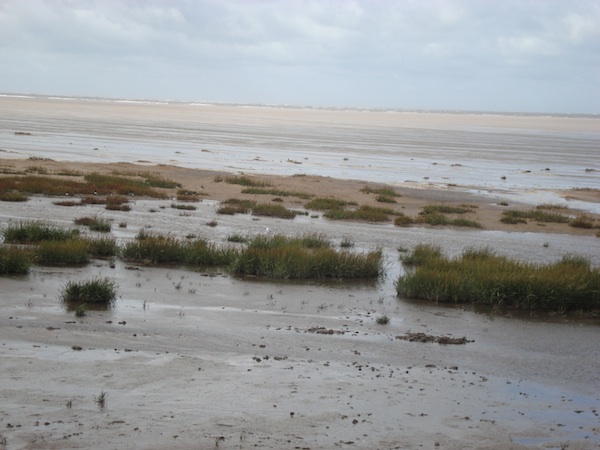Local conservationists are backing Wirral Council plans to end the maintenance of local beaches including the spraying of the spartina grass at Hoylake (pictured above).
This item published by the BBC says that Wirral Wildlife, the Wirral branch of Cheshire Wildlife Trust, believe that the money-saving plans would be beneficial to Hoylake beach.
Dr Hilary Ash from the group said trying to stop the growth of marsh grass was “fighting nature”. She said: “The council’s proposals do include stopping picking litter off the beach, and that is of course ridiculous and we obviously do oppose that. On the other hand, for years now they have been spraying marsh grass that is trying to grow on the beach and it is just fighting nature.”
Hoylake beach is a of Site of Special Scientific Interest (SSSI) due to the birdlife that inhabits the shore. Wirral Council currently has an agreement with  Natural England that provides consent for raking, spraying, digging and vegetation removal. Earlier this year the grass was sprayed with chemicals (a process that dates back to at least 1965) and  previous actions have included strimming and even large-scale mechanical digging.
It should be pointed out that the proposed Council spending cuts are not yet finalised and a public consultation exercise ‘What Really Matters‘ continues until the end of January. The maintenance of public parks and gardens is also a possible target for spending cuts.
We’ve discussed the beach grass on several previous occasions and opinions range from “let it grow” to “dig it up”. As Hoylake RNLI need clear access in and out of the lifeboat station at least some ongoing beach maintenance will be required. But what do you think? Have your say in the comments below!

Comments